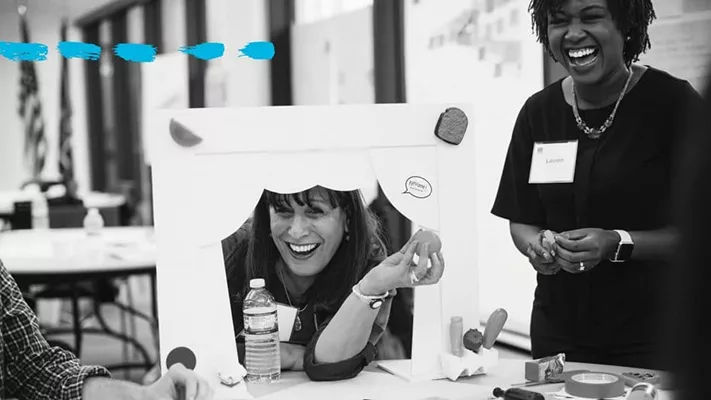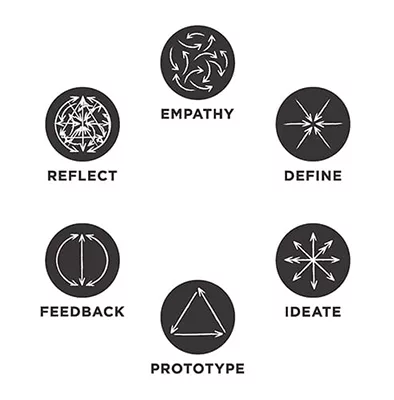
HFLI provides custom-designed experiences and scalable initiatives rooted in culturally-responsive practices. Our expertise as an innovation learning leader and our empathy as a strategic ally is reflected in every touchpoint, every engagement along a continuum of immersive, hands-on learning.
We are actively developing HFLI Studio as your online source for:
Our vision is a place where you can nurture your team’s projects for social good and activate your personal capacity to lead transformational change.
Wondering what we mean by design thinking at HFLI? We describe it as a collection of mindsets that enable/allow us to explore problems creatively, then reframe and act on them. A key point: it involves action, or “design doing,” as well as design thinking.
HFLI approaches design thinking in a way that:
These methods and mindsets go back decades; they draw from the work of systems thinkers, psychologists, anthropologists, design researchers, architects, and scientists to name a few. However, while there is increased use, investment and interest in design thinking frameworks in corporate, education, and nonprofit sectors, no common definition or agreement on the specifics of this methodology exists.
The learning experiences we create and deliver embody this philosophy.


Design thinking (and remember that also includes doing) is messy – it is not a closed-loop, it is not linear, and it is not static. Complex challenges require consistent circling back and around to check assumptions, reframe problems, and iterate on prototypes.
Over time our team has come to the nuanced understanding that design thinking actually looks something like this:

And, when you include the talents and contributions of people, like this:


We use cookies to ensure you get the best experience on our website. By continuing to use the site, you accept our use of cookies. See our Privacy Policy for more information.